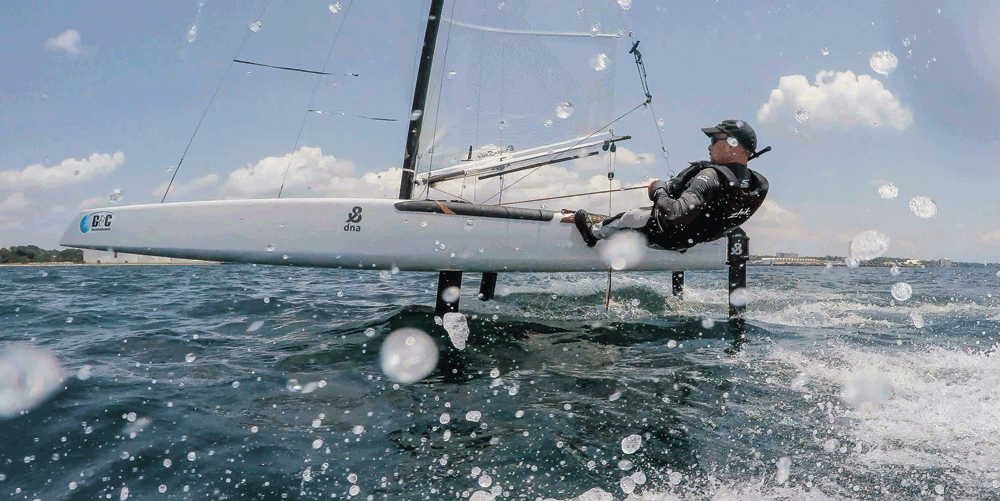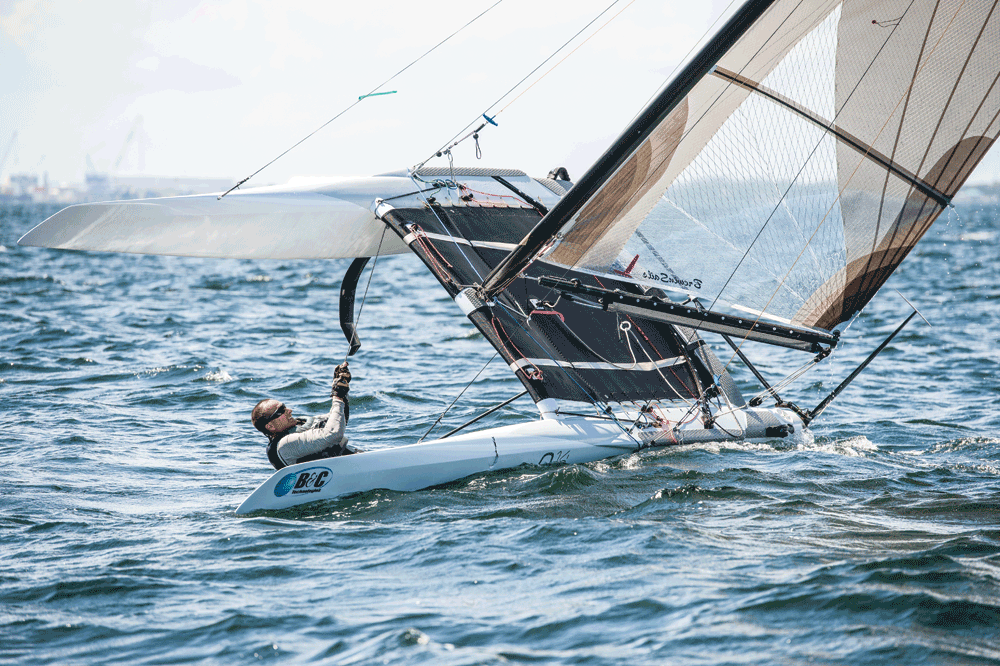The need for speed
The A-Cat development class is on a collective quest to sail the fastest boats against great friends

Described by some as a Rubik’s Cube of sailboats, the A-Cat offers the mental challenge of continually making a faster boat. Because the A-Cat is a development class, boats need only conform to maximum hull length and beam measurements, maximum sail area and minimum weight. Beyond that, sailors are welcome to do whatever they can to make the boat faster.There’s also an obvious passion and excitement for this class and the friends that they share it with. Although they come from different backgrounds, with different skill levels and different goals, these sailors are united by the challenge of the A-Cat. For such a simple boat, with only four strings to pull, it is deceptively hard to sail the boat at a high level, White said.
Ben Hall, vice president of Hall Spars, has been to 25 A-Cat North American championships and he has had a different boat for each. His current boat is a foiling carbon fiber dream. Weighing in at 165 pounds fully rigged, these incredibly light boats accelerate off the starting line like a Formula One race car.
With only a few days of racing in Panama City’s consistent breeze and flat water, it was already clear that even the first generation foiling boats are faster downwind than their non-foiling counterparts. The fleet was tightly grouped at the first weather mark but by the second lap the foiling boats had established their position at the head of the fleet. The class continues to change, pushing the boats and sailors in new directions. The current development cycle has almost half of the boats at this event moving towards America’s Cup-inspired foiling. The other half of the fleet consisted of older boats with sailors waiting to see if they want to follow their friends down this new path. The test right now is to see how the new boats perform.
Downwind the reduced drag on foiling boats is a significant advantage for those that have mastered the new designs. There is, however, a learning curve for the sailors. Hall said learning to foil is much like “one foot on a banana peel and the other on an oil slick.” But the grin on his face says it all.
Some holdouts said transitioning to a foiling boat can be cost prohibitive.

“I could convert my older boat to foiling but it would take $10,000 to do it,” Alex Shafer said.
And there are other disadvantages to modifying an older boat to foil. “The next step is reduced hull size and modified hulls to allow the boats to foil upwind as well,” Shafer said.
Some sailors argue that it’s better to wait and invest in a product that is farther along. The discussion goes on over the peanut butter and jelly bar before racing, a feature unique to St. Andrews Bay Yacht Club, and the yacht club bar after.
In the end, the fleet is an eclectic mix of home-built, one-off custom and true production boats. Each type has its appeal and each has helped to push the class along. The lessons learned are readily shared between competitors with the end game of improving the class. In the end, it’s a group of sailors who are fierce competitors and fast friends on a quest to fulfill their need for speed.

Comments